HOMER WATSON CHRONOLOGY
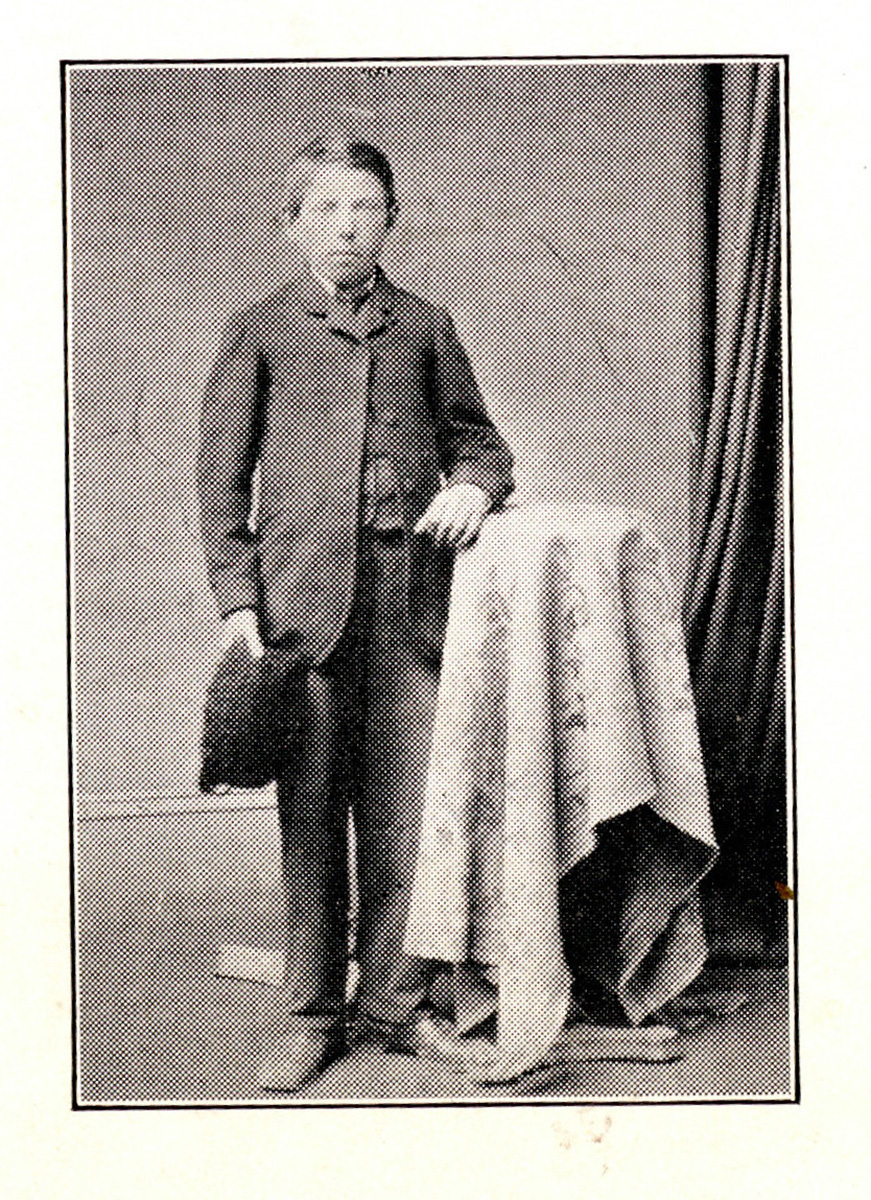
Homer Ransford Watson is born in the village of Doon, Ontario. He is the 2nd child of Ransford Watson and Susannah Moore.
Phoebe Amelia Watson is born in Doon, the 4th child of Ransford Watson and Susannah Moore.
Homer’s father, Ransford Watson, dies. Homer leaves school at the age of six to work to support his family.
After Queen Victoria signs the British North America Act, New Brunswick, Nova Scotia, Ontario, and Quebec are united into the Dominion of Canada, and Sir John A. Macdonald becomes the country’s first prime minister.
Jude Watson, Homer’s older brother, dies in a mill accident. Homer Watson is left as the primary income earner of the household.
Homer Watson receives his first set of oil paints and determines to become a professional painter. Lacking the means to receive formal training, he begins studying by copying pictures in books.
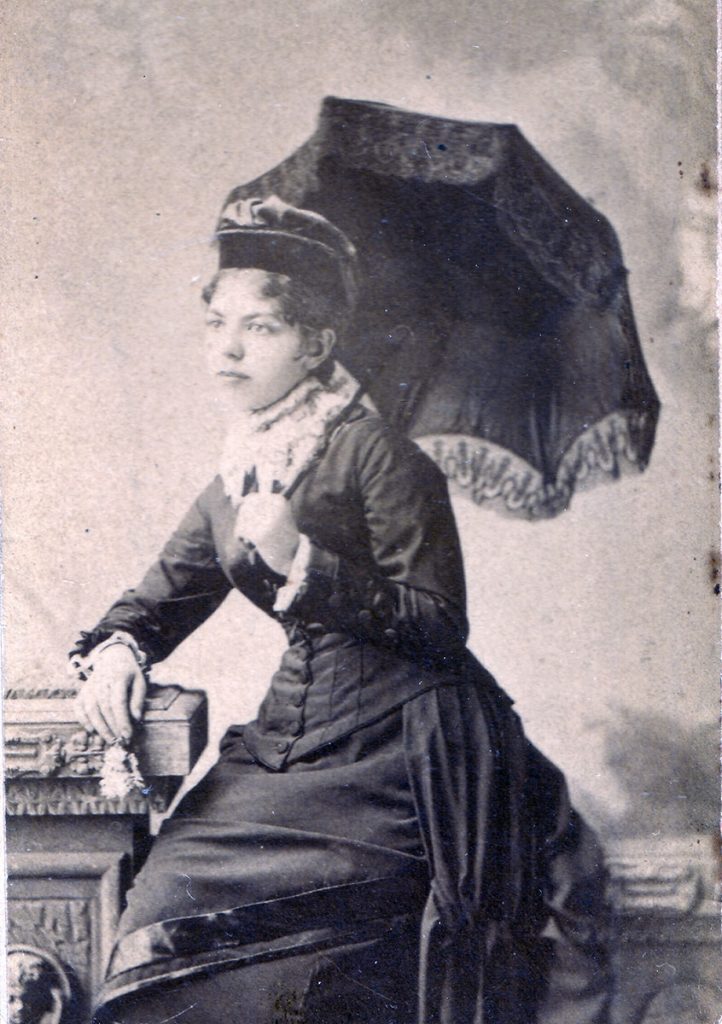
Phoebe Watson begins working as a Clerk at the local mill, her income supporting her family, and Homer Watson’s ambitions to become a professional painter.
Homer visits Toronto for the first time and is encouraged to focus on landscape painting by Thomas Mower Martin.
Homer Watson and Roxanna “Roxa” Bechtel become engaged.
Homer begins studying art in earnest in Toronto, studying the works of art on display at the Toronto Normal School and the Notman-Fraser photography studio, as he could not afford to take classes.
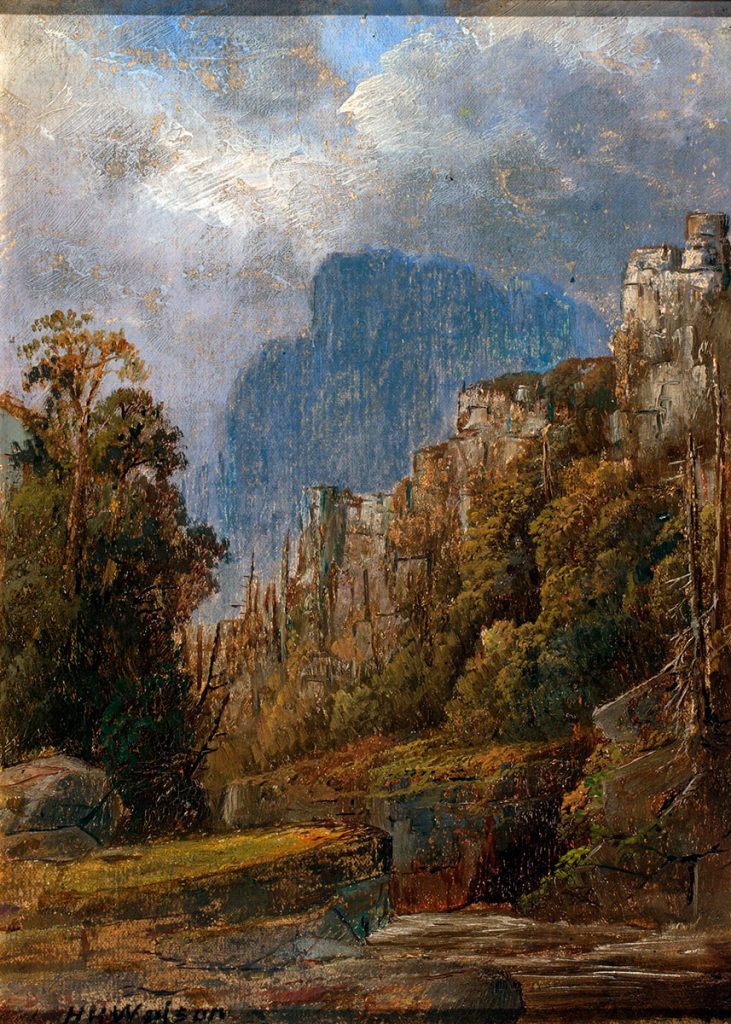
Homer travels to New York State where he paints the Adirondack Mountains and the Susquehanna, Mohawk, and Hudson rivers. He stays there until 1877.
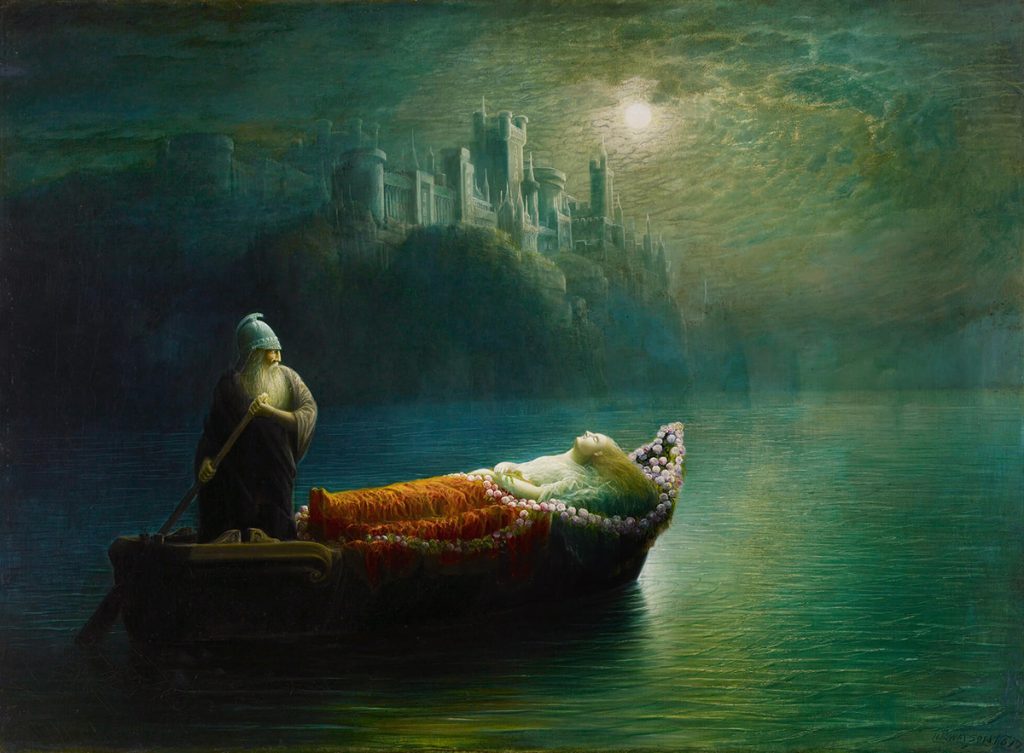
Homer finishes The Death of Elaine, his first major work of art.
Homer exhibits with the Ontario Society of Artists for the first time.
Homer makes his first trip to Lily Dale, New York State, to explore the concepts of Spiritualism.
The Pioneer Mill is purchased by Canada’s governor general, the Marquis of Lorne, as a gift for Queen Victoria
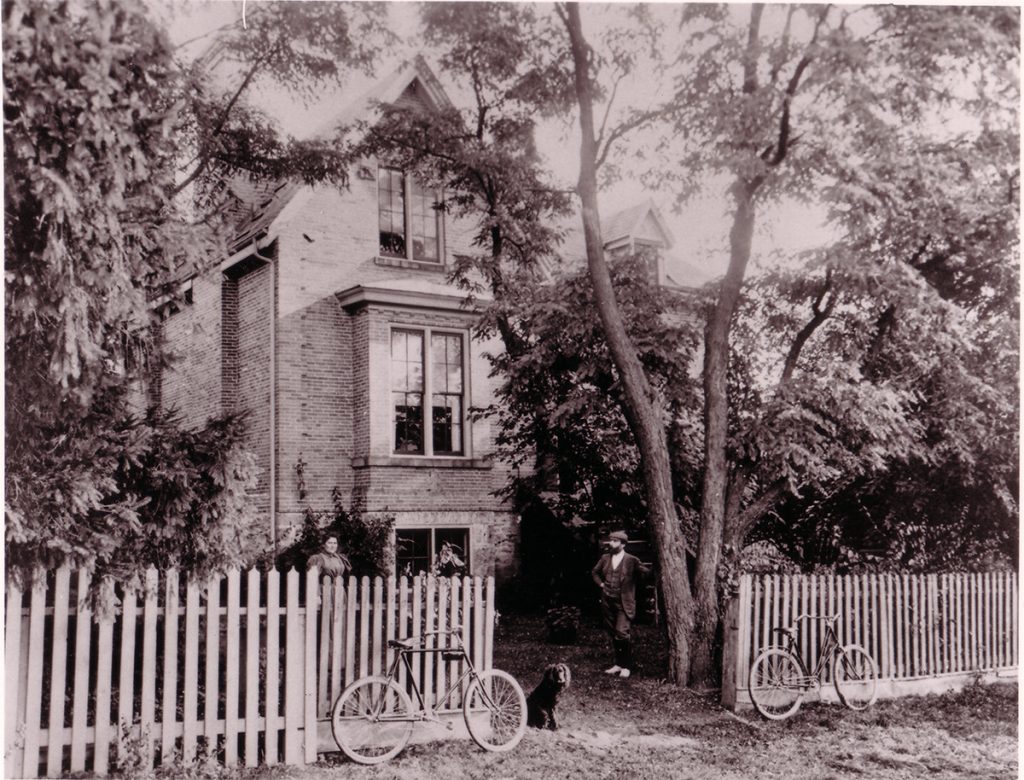
Homer marries Roxa, and they move into the present-day Homer Watson House & Gallery as renters.
Lorne purchases The Last Day of the Drought, also as a gift for Queen Victoria. Watson’s popularity soars.
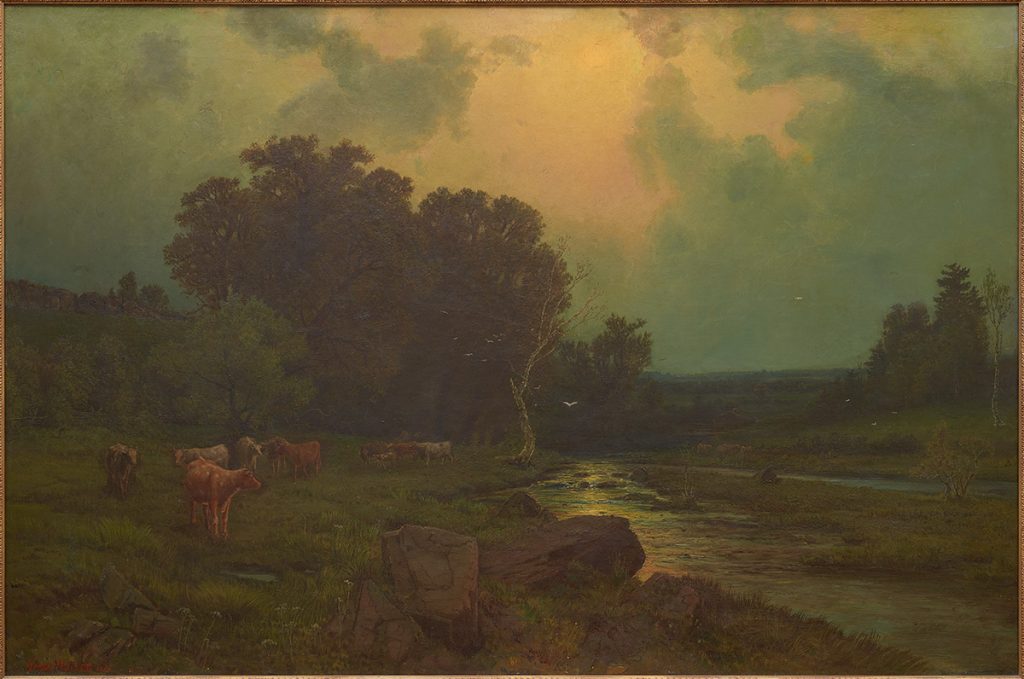
Homer Watson receives the endorsement of a young Oscar Wilde, who himself was growing in popularity at this time, referring to Watson as “the Canadian [John] Constable.”
Homer and Roxa officially purchase the house they were renting and become permanent residents there. Their son, Charles Watson, is born and dies shortly after.
Phoebe moves to Toronto to take art lessons from William Cruikshank, who was a teacher at what is now known as the Ontario College of Art & Design.
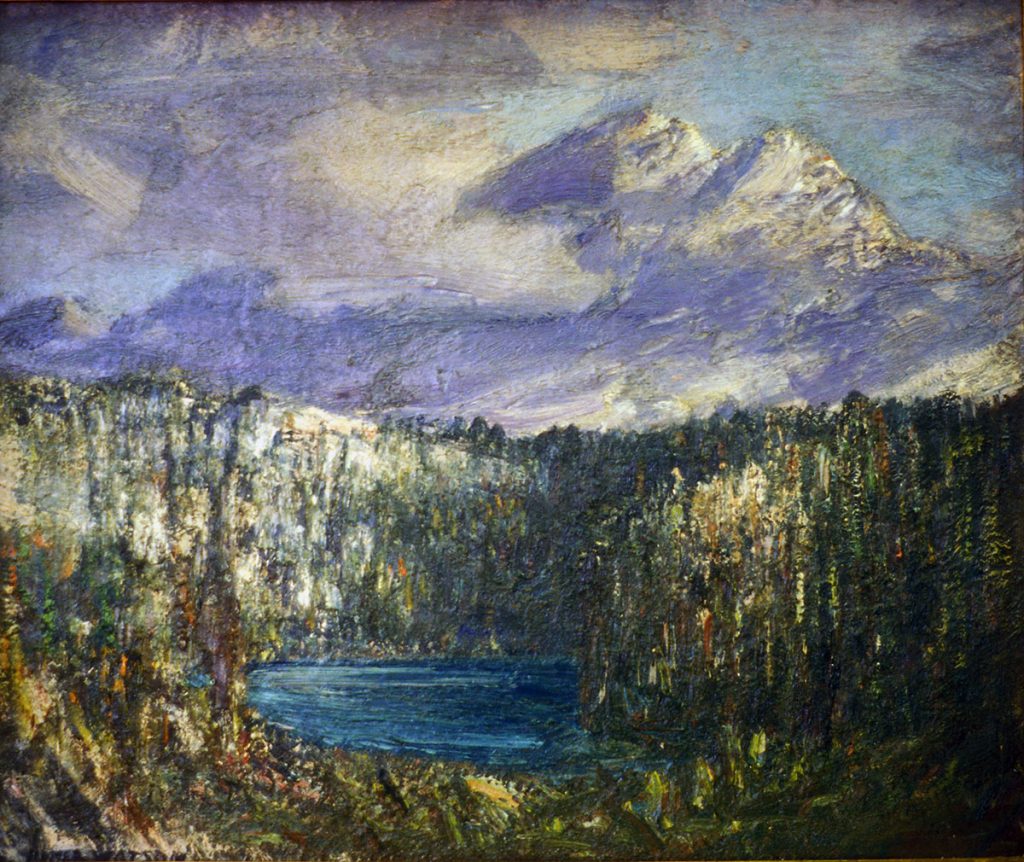
The federal government establishes a reserve at Banff; it later becomes Banff National Park.
Five of Homer’s paintings are included in the Colonial and Indian Exhibition in London, England, earning him a bronze medal.
Homer attends the Toronto’s Industrial Exhibition, winning four prizes.
Homer travels to Britain where he works to establish his reputation in Europe. He spends three years there before returning to Doon. During this time, he studies the Old Masters of Europe.
Algonquin Park is founded.
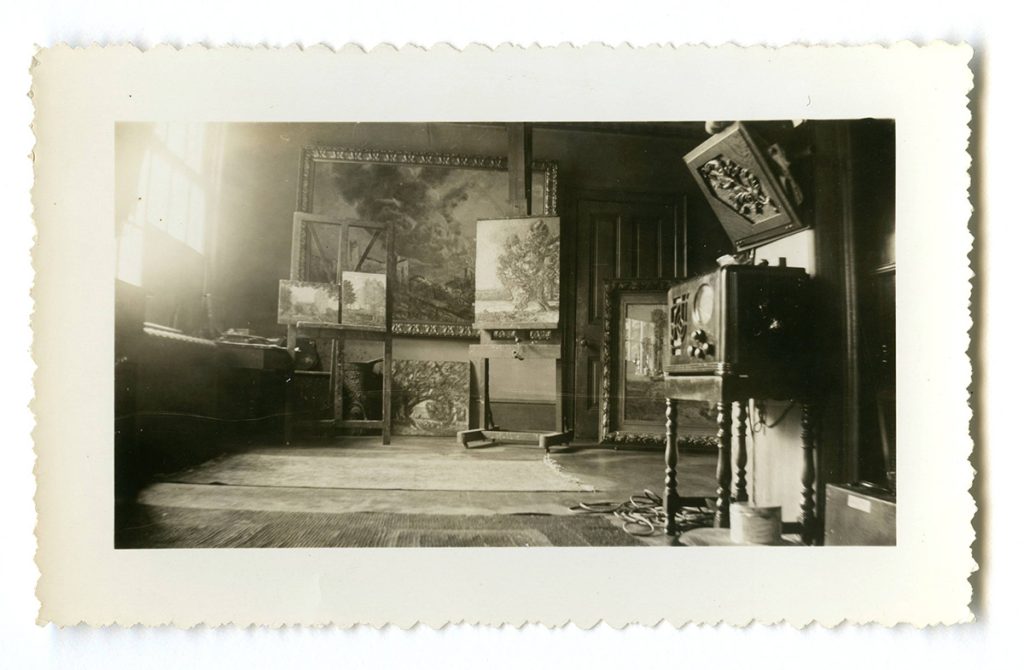
Homer builds an extension on his home to act as a painting studio. He creates a frieze along the top of the studio, with personal renditions of paintings that inspire him.
Phoebe is one of sixteen female Canadian artists selected to contribute art to the Canadian Historical Dinner Service. She submitted twelve hand painted soup bowls depicting Canadian scenes.
Homer paints The Flood Gate, which he considers to be his masterpiece.
Homer attends the Pan American Exposition in Buffalo, N.Y., and wins a gold medal.
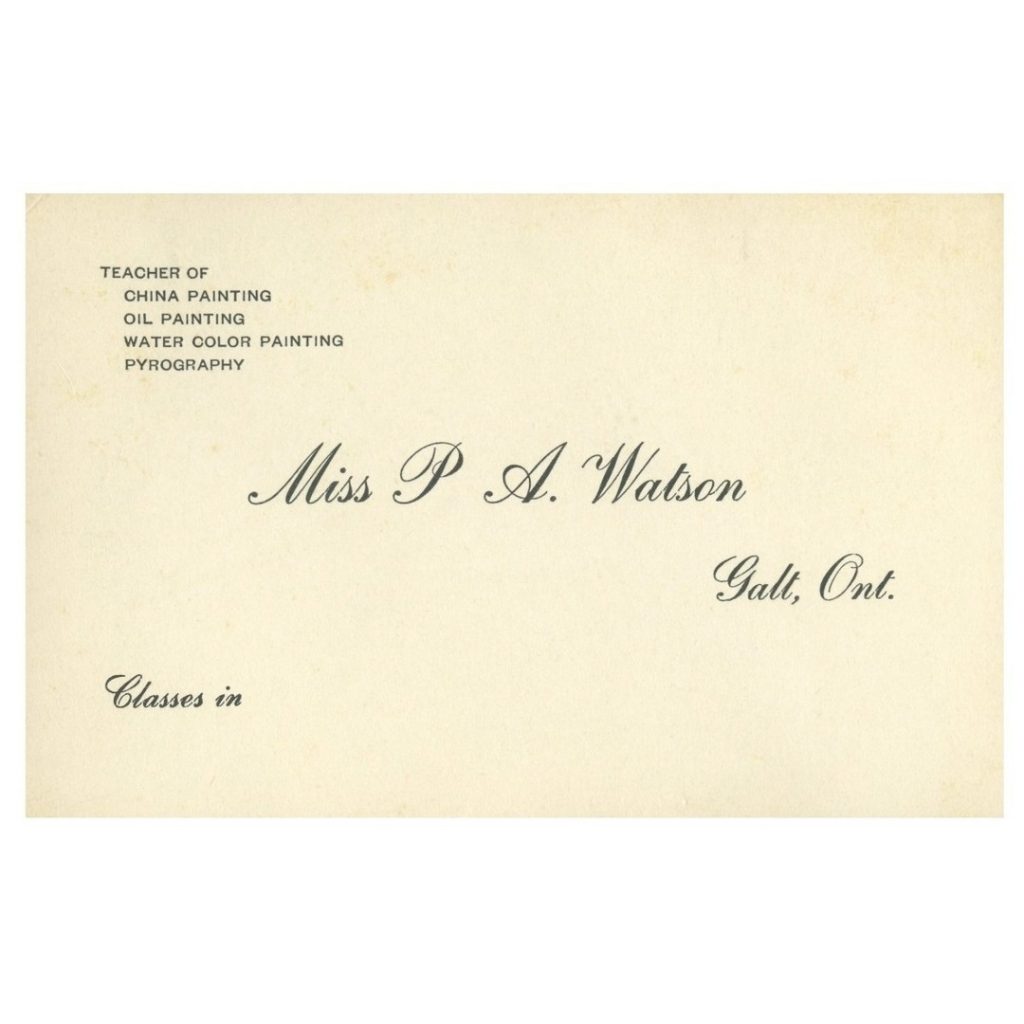
Homer purchases a house for his sister Phoebe Watson and his Mother Susannah Watson in Galt, Ontario. Phoebe Watson opened a store in Galt, selling her own artworks and teaching her trade.
Homer wins a bronze medal at the Canadian Exhibition at the Louisiana Purchase Exposition for his painting The Flood Gate.
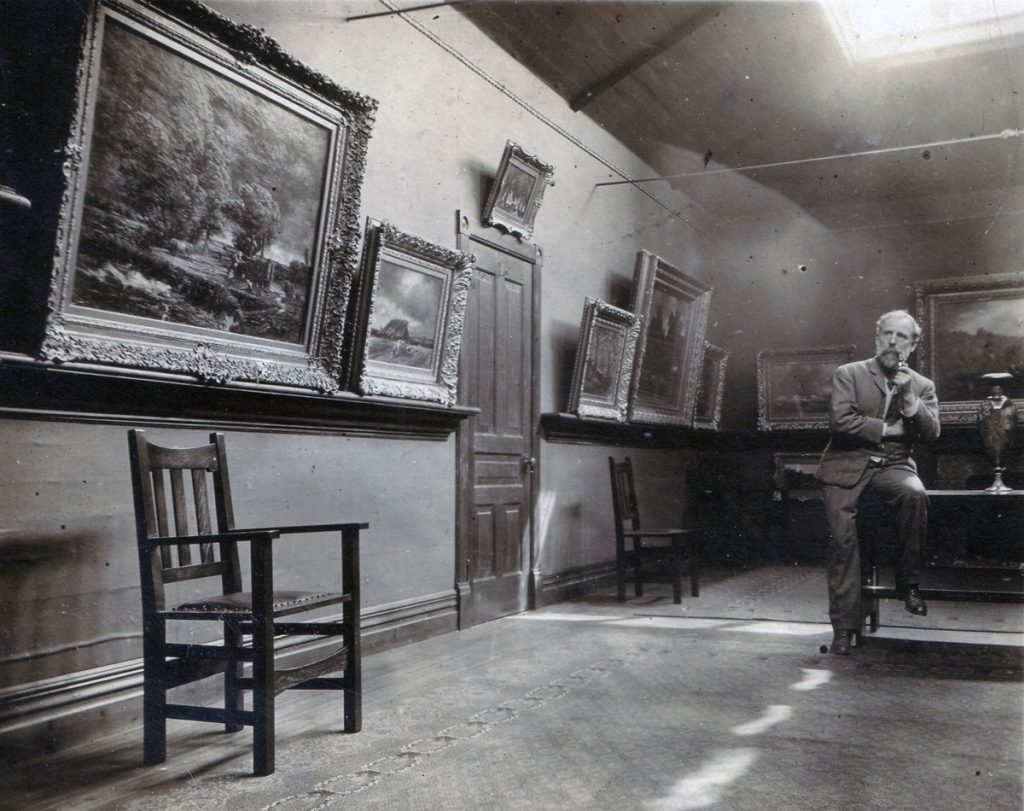
Homer adds a personal gallery space onto his home.
Homer Watson becomes the first president of the Canadian Art Club, after leaving the Ontario Society of Artists, due to a lack in creativity in their exhibits. This would inspire the OSA to re-evaluate how they approach exhibitions. He would remain president of CAC until 1913.
Susannah Watson dies at the age of 73.
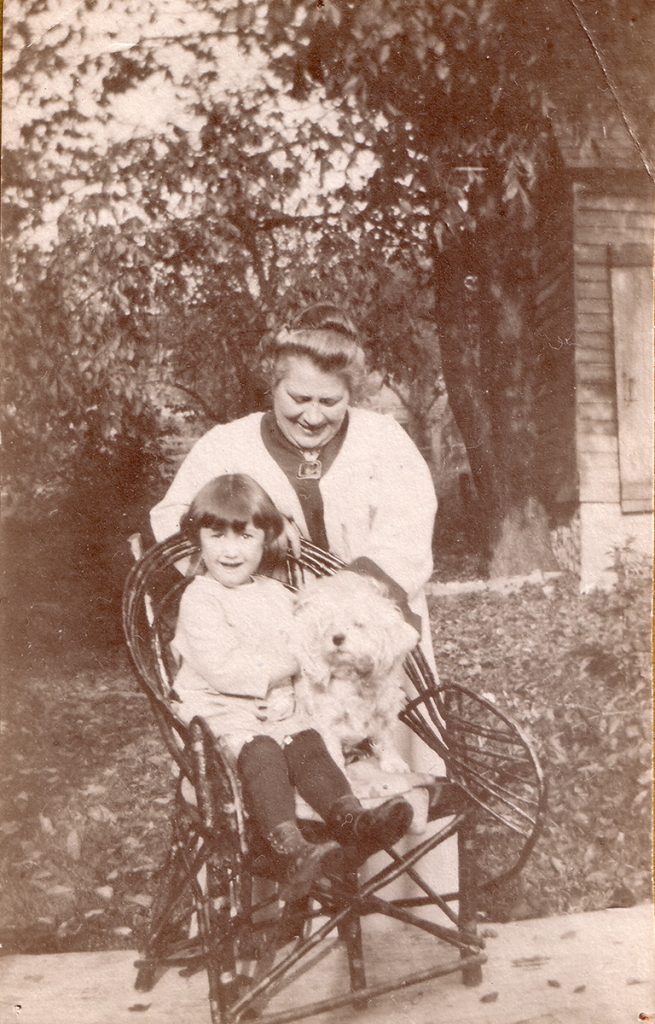
Homer and Roxa adopt their daughter, Mary Watson (age 2 or 3).
Canada participates in the North American Conservation Conference.
Canada establishes the Dominion Parks Branch, which later becomes Parks Canada.
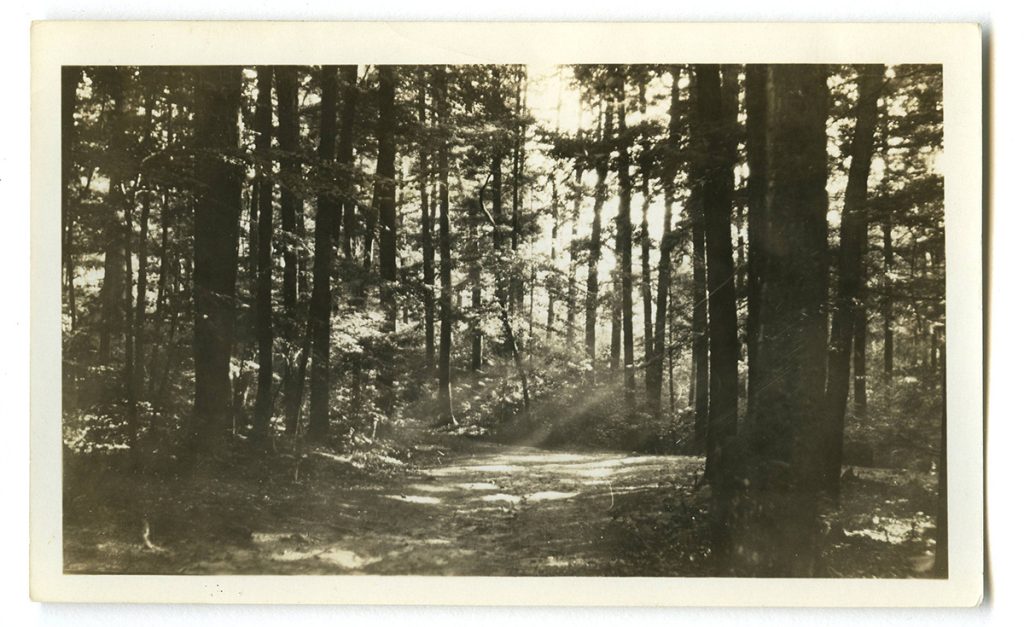
Cressman’s Woods (now Homer Watson Park) is at risk of being purchased by a sawmill owner. Homer and several locals form the Grand River Park Company to preserve it.
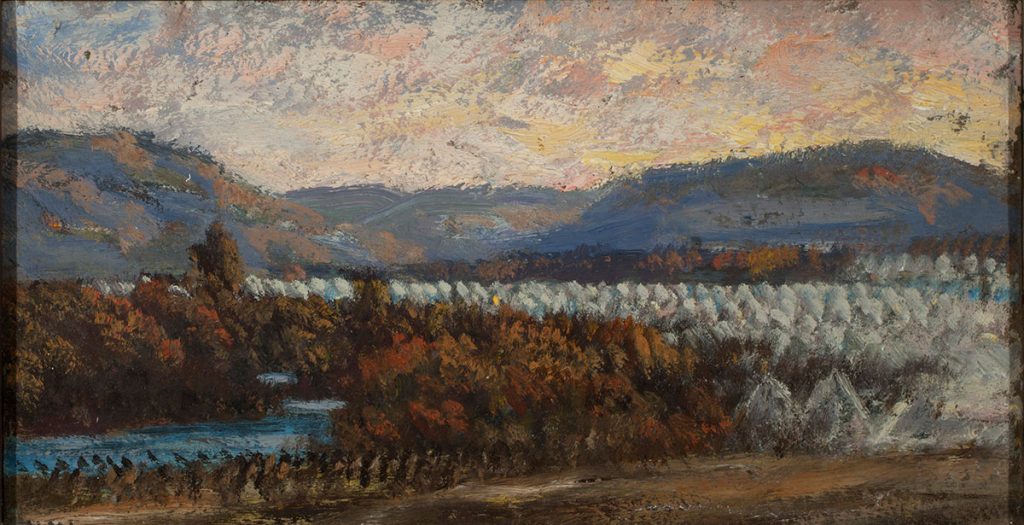
Homer becomes the vice-president of the Royal Canadian Academy of Arts.
Homer paints the first Canadian Expeditionary Force in Valcartier, Quebec.
The Canadian Art Club shuts down, and Watson is re-inducted into the Ontario Society of Artists, as they came to appreciate the changes he inspired in their organization when he initially left.
The Convention for the Protection of Migratory Birds in the United States and Canada, an early bilateral effort to protect wildlife, is signed.
Homer is elected president of the Royal Canadian Academy of Arts.
Roxa dies, sending Homer into a much more spiritual phase in both his life and art. Phoebe Watson moves in shortly after to help care for the family.
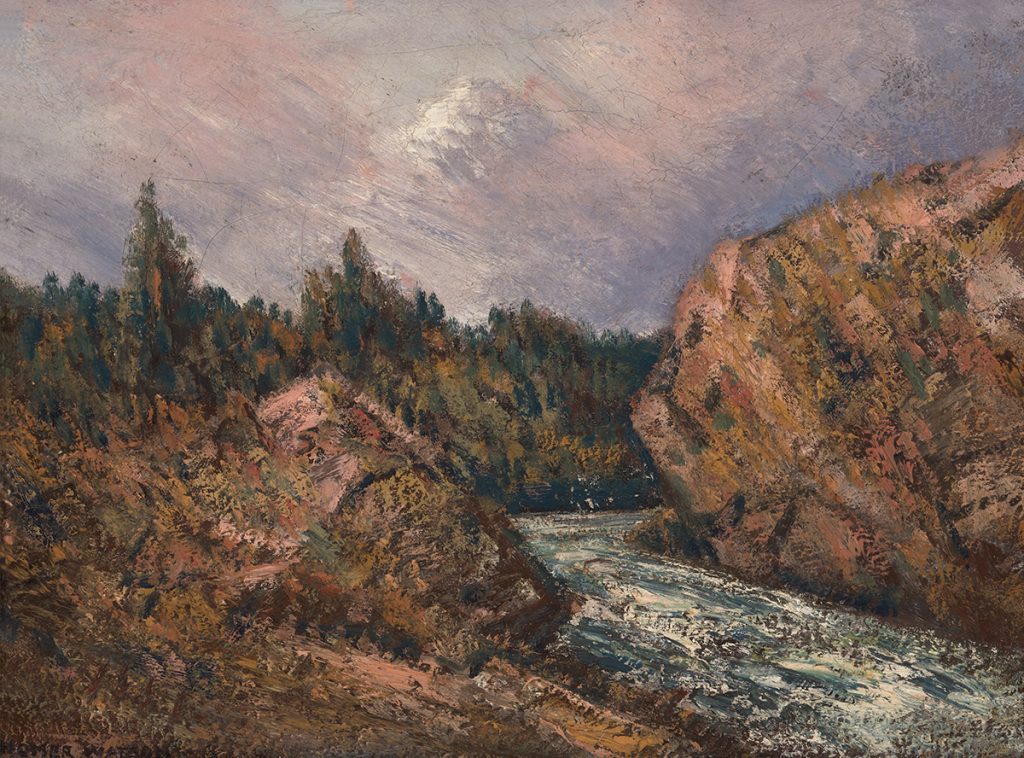
Homer travels to the Rocky Mountains for the first time.
Homer steps down as president of the Royal Canadian Academy of Arts due to his failing hearing.
Homer buys his first automobile, which enables him to carry his painting equipment on long trips.

Homer Watson is caught in the middle of mounting tensions between the Royal Canadian Academy of Arts and the National Gallery, the RCA supporting traditional painting methods, where the National Gallery supported the growing “Modernist” painting style that was used by the Group of Seven.
The Stock Market Crash forces Homer to hand over many of his paintings to pay his debts, having lost his savings in the crash. He spends the remaining years of his life improving his craft and using his works as currency to keep himself afloat while his health and finances declined.
Canada passes the National Parks Act. This act declares the parks “dedicated to the people of Canada for their benefit, education and enjoyment,” and it requires that the parks be maintained for future generations.
Homer suffers a heart attack which prevents him from painting for the better part of a year. He continued to experience several health issues, but carried on painting whenever he could.
Homer Watson sells paintings to his good friend and fellow spiritualist, William Lyon Mackenzie King. King hangs the moonlit scenes in his apartment at Laurier House, Ottawa.
Homer Watson dies in Doon at the age of eighty-one. He is awarded an honorary doctorate by the University of Western Ontario. Phoebe Watson continues to live and work in the house, displaying Watson’s works in the gallery and acting as curator of his work.
Phoebe Watson dies, leaving the legacy of the Watson family in a precarious state.
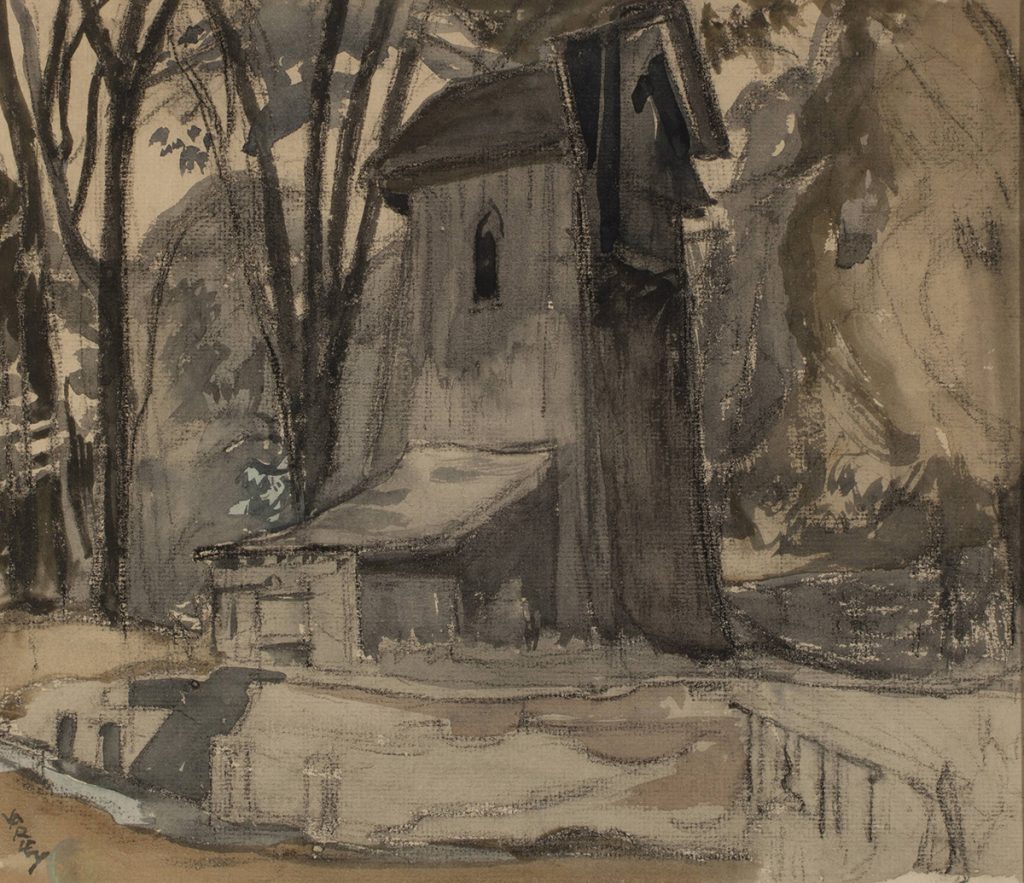
Ross and Bess Hamilton purchase the Watson house, establishing it as the Doon School of Fine Arts. Notable teachers include Fred Varley of the Group of Seven.

A plaque is placed at the front of the House commemorating the life and career of Homer Watson.
The University of Waterloo and the Doon School of Fine Arts begin a collaboration, offering new programs like ballet at the Doon School.

The Watson House is purchased by Earl Putnam, temporarily shutting down the Doon School of Fine Arts. Soon after, the Watson house is purchased by Tom and Ruthe Cayley, who re-open the Doon School of Fine Arts.
Tom Cayley dies, and the Doon School of Fine Arts is closed. Ruthe Cayley and the local community campaign to have the building preserved as a place of arts education.
Watson’s house, now the Homer Watson House & Gallery, is declared a National Historic Site of Canada.
The Frieze in Homer’s studio, which depicted many of Homer’s inspirations, is restored after almost a decade of planning and work.
The Homer Watson House & Gallery still stands, holding up the ideals of its past residents and educating and supporting the artists of tomorrow.











